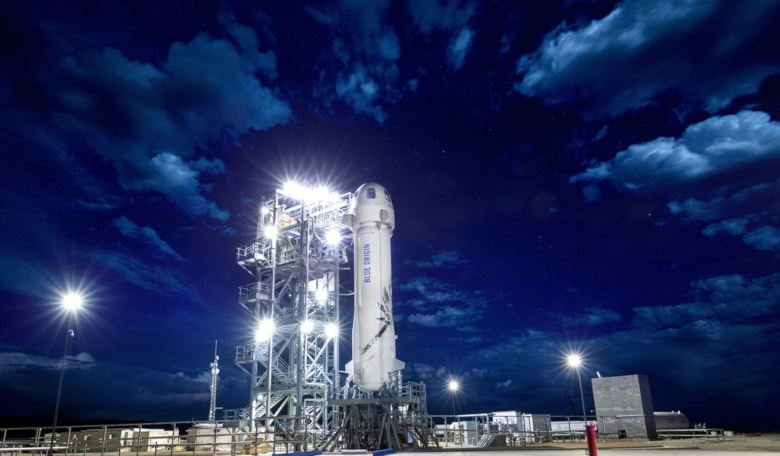Jeff Bezos’ spaceflight company Blue Origin has sent its suborbital rocket to space and returned back safely to Earth 10 minutes later on its 11th test flight. The rocket-capsule combo lifted off from Blue Origin's West Texas testing ground shortly after 9:35 a.m. EDT. After reaching a peak altitude of 105.6 kilometers, the crew capsule separated from the propulsion module before landing later with the aid of parachutes. The propulsion module made a powered vertical landing on a nearby landing pad.
The ongoing testing is part of the company’s advancing efforts to prove the rockets reusability status and to ready the vehicle for eventually flying passengers. As such, there were not any human hitchhikers on this launch, but the first crewed flights of the vehicle could come as early as this year, Blue Origin representatives have said. However, this mission, named NS-11, is all about science and it has delivered 38 payloads above the Kármán line into space for NASA and other organisations, some of which include:
Orbital Medicine – Orbital Medicine, a small business focused on aerospace medicine, comes to us through funding from NASA’s Flight Opportunities Program. On NS-11, Marsh Cuttino, MD, will demonstrate an experimental medical technology designed to treat a collapsed lung in zero gravity (which is a gravity-dependent procedure). Thanks to a previous flight on New Shepard, Dr. Cuttino has been able to evolve the technology and this flight will prove a near-final version that could one day save lives in space.
New Century Technology High School – A group of students from Huntsville, AL have designed an experiment to test temperature fluctuations in microgravity. The students were excited to get hands-on experience for a project they’ll be able to launch to space and worked with NASA engineers to perfect their design. By lowering launch costs, more and more students will have the chance to design, build and send technology to space.
MIT Media Lab Space Exploration Initiative – The Space Exploration Initiative is built on the spirit of the MIT Media Lab, uniting artists, engineers, scientists, and designers. As the first MIT flight with New Shepard, the Space Exploration Initiative is flying several scientific payloads, as well as two projects that use zero gravity as a medium for works of art. Telepresent Drawings in Space uses graphite to create a drawing that could only have been made in space. Living Distance: A Spider-Inspired Robotic Dance in Weightlessness demonstrates a crystalline robotic device that navigates zero gravity, similar to a performance. Other payloads include TESSERAE: Self Assembling Space Architecture, Floral Cosmonauts: Crystal Electro-Nucleation and Queen Bee Maiden Flight.











